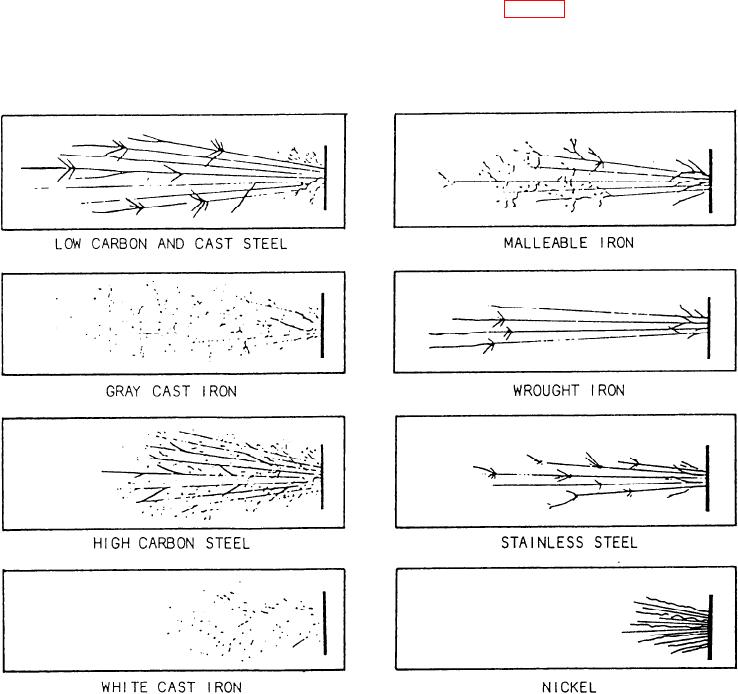
piece. With your eyes focused at a point about
nickel spark can be identified by tiny blocks of
brilliant white light. Silicon suppresses the carbon
one-third the distance from the tail end of the stream
burst even more than nickel. When silicon is present,
of sparks, watch only those sparks that cross your line
the carrier line usually ends abruptly in a flash of
of vision. You'll find that after a little while you will
white light.
form a mental image of an individual spark. After
you can fix the spark image in mind, you are ready to
To make the spark test, hold the piece of metal on
the wheel so you throw the spark stream about 12
examine the whole spark picture.
inches at a right angle to your line of vision. You'll
In the sample of low-carbon steel, notice that the
need to spend a little time to learn at just what
spark stream is long (about 70 inches) and the volume
pressure you must hold the sample to get a stream of
is moderately large. The few sparklers that may occur
this length without reducing the speed of the grinder.
are forked. In the sample of high-carbon steel, the
Don't press too hard because the pressure will
stream is shorter (about 55 inches) and large in
increase the temperature of the spark stream and the
volume. The sparklers are small and repeating, and
burst. It also will give the appearance of a higher
some of the shafts may be forked.
carbon content than that of the metal being tested.
White cast iron produces a spark stream about 20
After practicing, select a couple of samples of
inches long (see fig. 3-3). The volume of sparks is
metal with widely varying characteristics; for
small with many small, repeating sparklers. The
example, low-carbon steel and high-carbon steel.
color of the spark stream close to the wheel is red,
Hold first one and then the other against the wheel.
Always touch the same portion of the wheel with each
while the outer end of the stream is straw-colored.
Figure 3-3.--Spark pictures formed by common metals.
3-13

